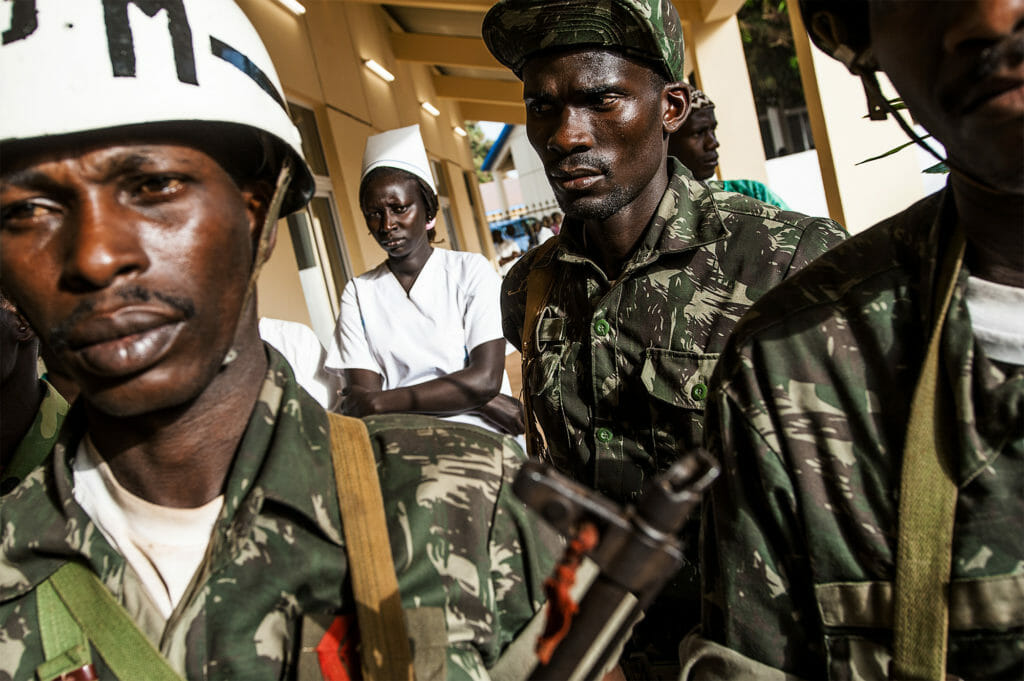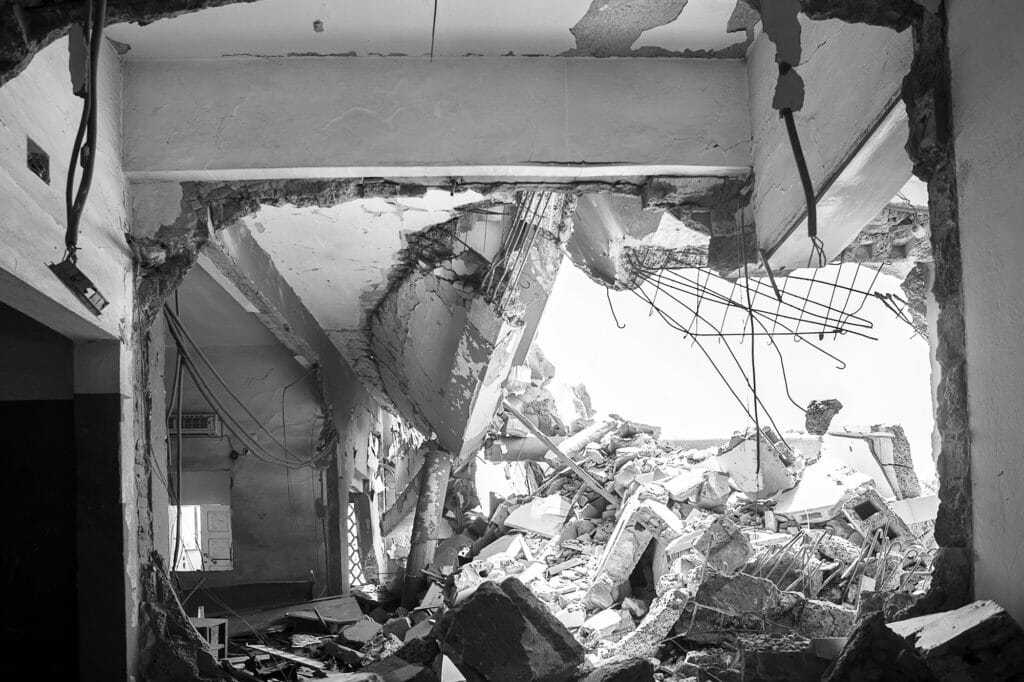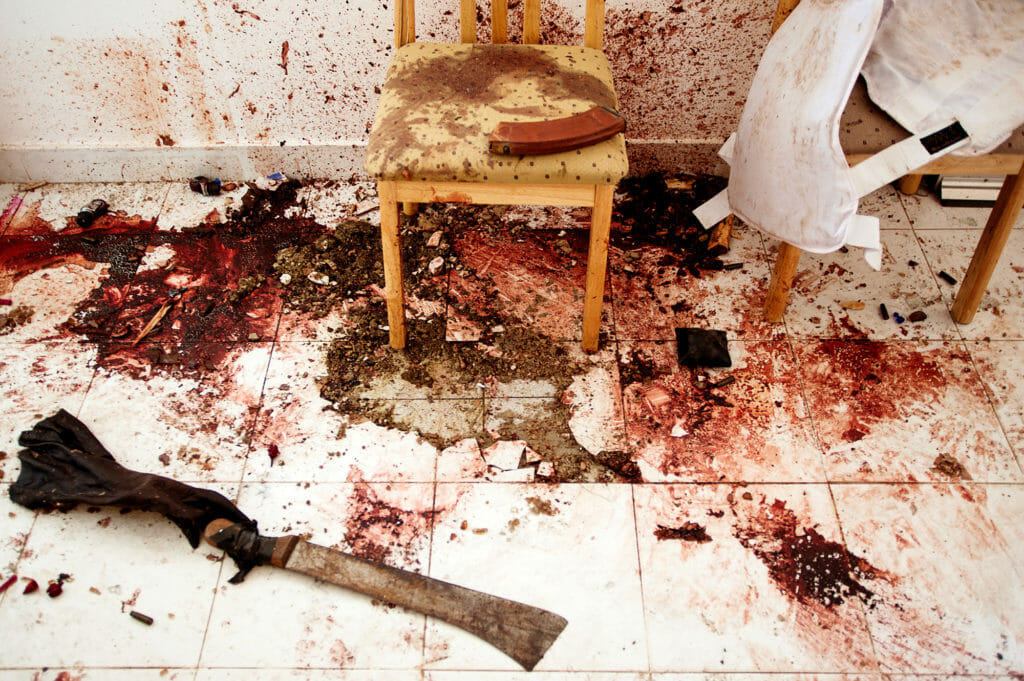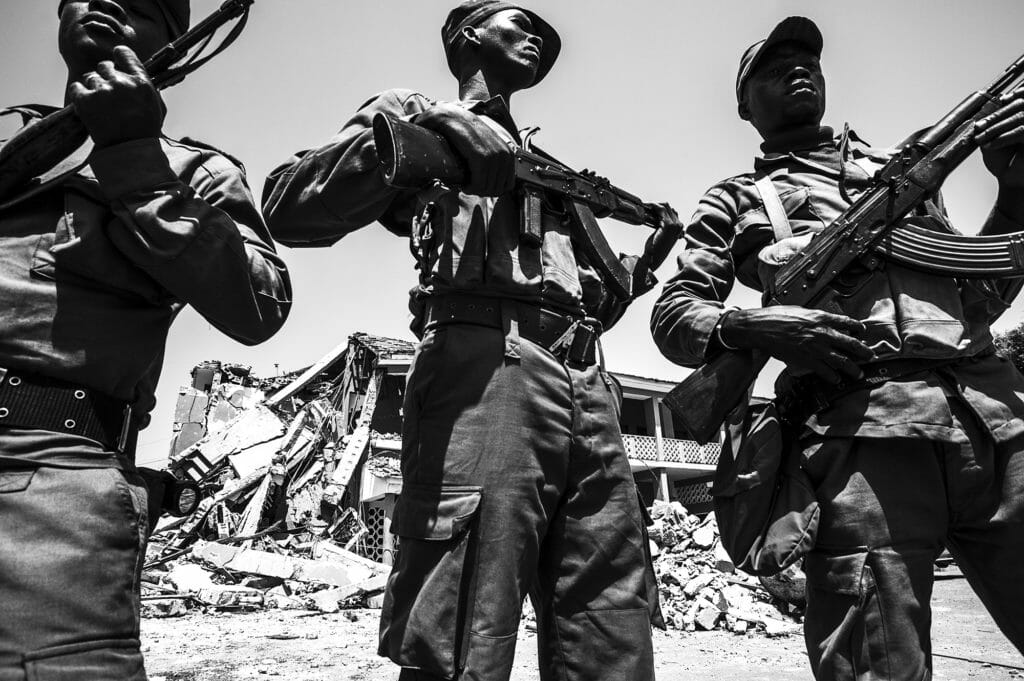Narco State
A bomb, private jets and cocaine
A confidential source close to the Interpol, who spoke in condition of anonymity, tells me that a private jet arrived in Bissau on Thursday, February 26, three days before the assassination of army chief Tagme Na Wai. The plane landed and took off a few hours later from but strangely there is no record of such aircraft at the airport’s flight traffic office. This same day 200 kilos of cocaine disappeared from the Navy’s storage; some soldiers known to be loyal to President Joao Bernardo Vieira were spotted loading the flight, by the hangar where the plane was parked.
Genetral Tagme Na Wai was killed by a sophisticated bomb, made in Thailand, the kind of device you need to buy outside of Guinea-Bissau; outside most of Africa, in fact, an indication of foreign involvement. It’s not clear who was flying on this jet. Planes are often used to smuggle cocaine to Europe but they usually don’t land at the main airport. I subsequently asked Calvario Ahukharie, the director of Interpol, if he could confirm the information I had on the jet and the bomb.
“I can’t give you more details than you already have, he said. “The investigation has just begun. We also suspect that the bomb arrived in Bissau with a private flight a few days before the assassination and it’s true that 200 kilos of cocaine had vanished. That’s all.” Calvario smiles and says a team of investigators from Interpol headquarters, in Lyon, France, will soon arrive in Bissau.
Originally Published
Author
Marco Vernaschi
Media
Time, New York Times, Newsweek, Sunday Times, Internazionale, VQR, Global Post, El Pais, BBC, FRIJ, Suddeutsche Zeitung, L'Espresso, Frontline Iwitness CBC


Private jets played a major role during the last few months in Bissau’s drug crime scene. Before the spiral of violence started, in November 2008, the Interpol and the Judiciary Police seized another similar plane, originating from Venezuela, which is currently parked at the airport. On that flight the police found several kilos of cocaine that mysteriously vanished after being seized. The pilot fled to Malawi but the co-pilot was arrested. The Interpol was able to rescue seven satellite phones that were then decrypted, providing important information about a network of drug traffickers.
The U.S. Drug Enforcement Administration and the Spanish Police confirm that it was July 12th when the N351SE Gulfstream proceeding from Venezuela jet landed in Bissau, loaded with 500 kilos of cocaine. The Guinean police immediately surrounded the jet and arrested three Venezuelans; they were identified as Carmelo Vásquez Guerra, Carlos Luis Justiniano Núñez and Daniel Aguedelo Acevedo. Three policemen and two air traffic-control agents were also arrested and charged with complicity with the traffickers.
Five days later, the Interpol, in cooperation with the DEA and FBI, inspected the flight with a drug-sniffing dog, confirming that cocaine had been transported on the jet. But the drug had vanished. Antonio Maria Costa, Executive Director of the UNODC confirmed later that “hundred of boxes (containing cocaine) had been taken out from this jet” and opened an investigation on the case, with the FBI, Interpol and DEA.
The interesting issue in this case, which shows connections with the Mexican drug cartels, is that pilot Carmelo Vasquez Guerra was investigated by the Mexican Police (case number PGR/SIEDO/UEIDCS/117/2006), for a DC-9 jet, N900SA, also proceeding from Venezuela and loaded with 5 tons of cocaine, that landed in Ciudad del Carmen, Campeche, Mexico, on April 10t, 2006. During this operation Miguel Vasquez Guerra, Carmelo’s brother, was arrested along with five other members of the jet’s crew. The crew is reputed to have been part of the Chapo Guzman criminal organization, the most powerful among the Mexican drug cartels.
During the operation carried out in Bissau the Interpol was able to seize seven satellite phones. These were decrypted, providing important information about this net of drug traffickers.
I meet Lucinda Barbosa in her office, at the Judiciary Police offices, to ask some questions about the jet that was seized in November.
“I’m fighting a war, alone, against someone that I will never defeat,” she said. “Look at our offices…We have nothing here. The international community keeps promising aid but we are working with just one car and most of our agents have had no salary for four months. Of course they are corrupted, they need to feed their families! How can we possibly compete with drug traffickers?”
Then she locks the door, and picks up a folder from her desk.
“I want to show you the situation we have here. If you want to investigate, you need a clear picture.”
Lucinda opens the folders, and shows me a series of pictures taken with a mobile phone, by one of her informants, at the airport. They depict some soldiers, in uniform, unloading the private jet seized in November. Their faces aren’t clearly visible, but a witness would be able to identify them.
“See? That’s how things work here. We had the flight, the pilot and the pictures. We also had the drugs but then it vanished… This would have been an easy trial in your country, but here nothing happened. The judge said the pictures don’t show any evidence and now that the drug has gone, the trial is dead. I’m really sick of that and I feel alone.”


I was looking for more information about this case, so I simply googled the flight number when I came across a web page (www.n351se.com) — the flight number. Marco Ramos posted: “These are documents from the Republic of Guinea Bissau that clear this aircraft of criminal charges outlined in the document.” A PDF file showing the reports made by the Guinean authorities and translated from Portuguese into Spanish and English; it shows how the investigation was clearly killed, with the help of former Chief of the Army, General Tagme Na Wai, who is mentioned in the document.
From the day this plane was seized, the equilibrium between the Army and President changed and Bissau streets turned more violent. Bubo Na Tchuto, former Chief of the Navy, was arrested in November and fled to Gambia a few hours after. The president’s compound was assaulted in December in what appeared to be more a settling of scores than an attempted coup d’etat. At least 15 people died in drug-related crimes. The assassination of the General and the President were just the last chapter of a series.
President Nino Viera was aware of the power that his generals were gradually gaining and began to feel isolated. The jet issue of November 2008 added more problems and so he decided, investigators believe, to eliminate all those who were putting at risk his business. They say the goal was to strengthen his position at home – and to regain control over the drug trafficking trade. He needed to show the Latin American drug cartels that Guinea Bissau was still a convenient place for their business.
Vieira, who was known for the brutality of his methods, decided to use his skills. The first to fall was the navy chief, who fled because he knew that if he stayed he would be killed. With Army chief Batista Tagme Na Wai the president knew there would be no room for mercy or for mistakes – which is why Tagme was blown to smithereens.